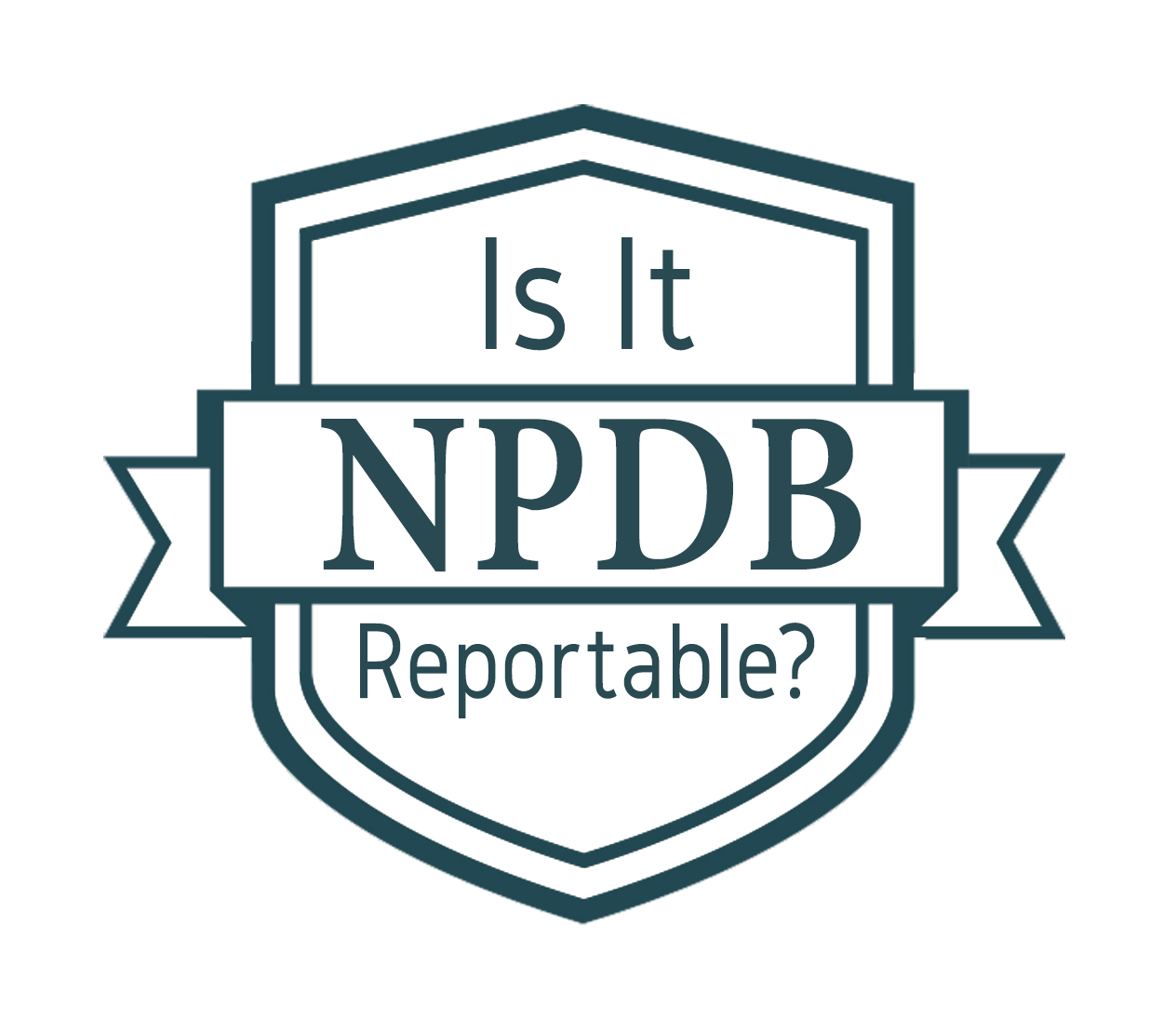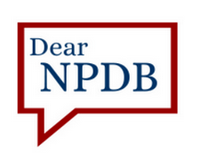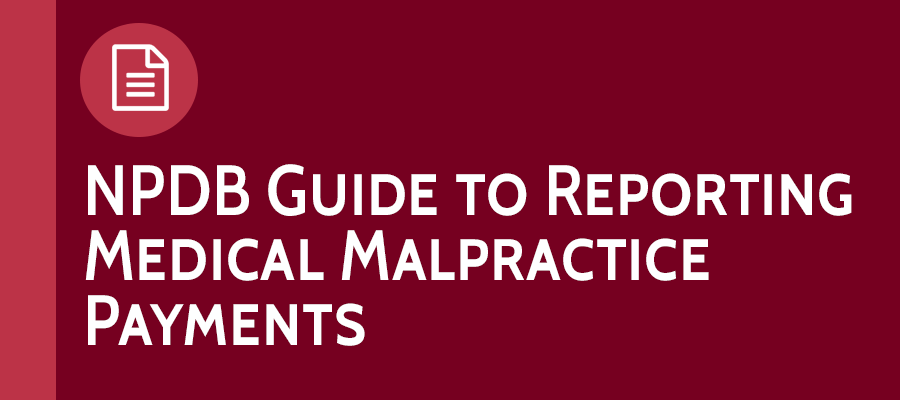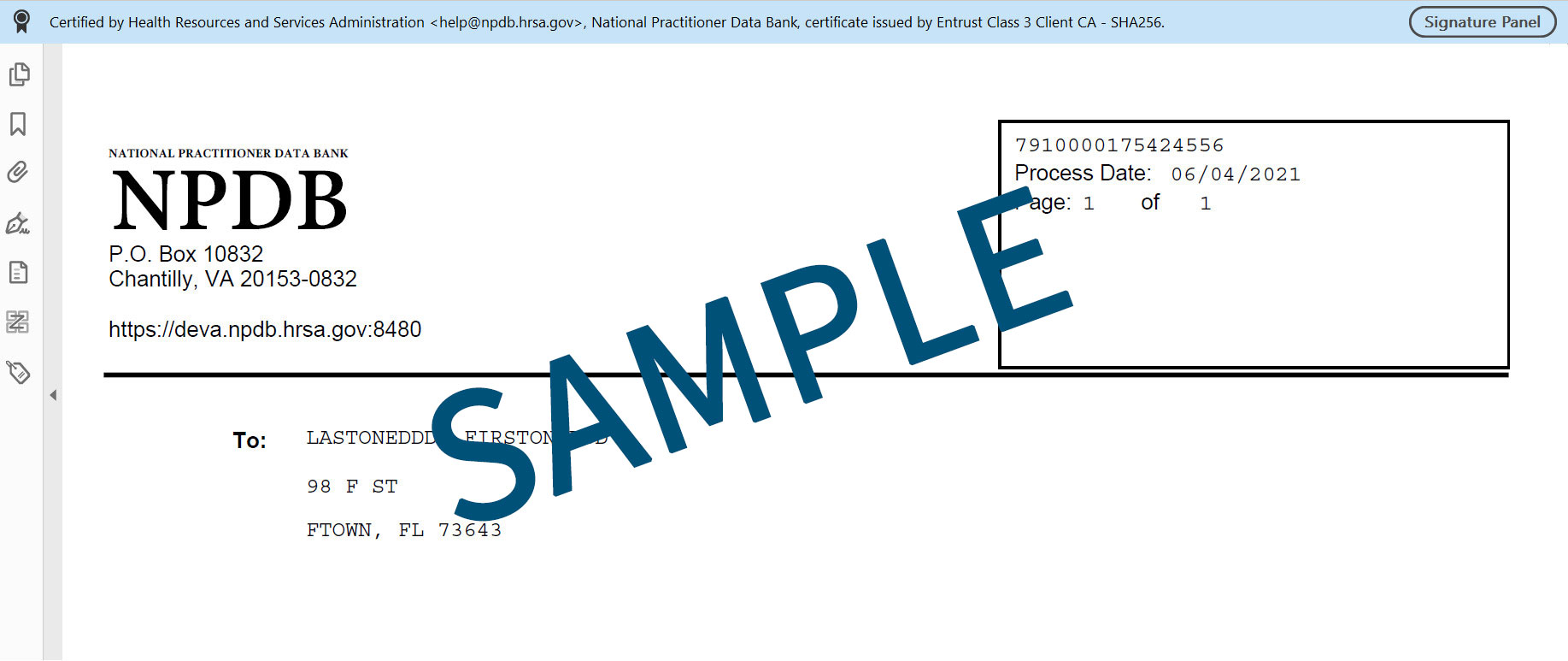NPDB Insights - November 2021
Register Now for the Is It Reportable? Reporting Scenarios Webcast on Tuesday, November 16!
Join us Exit Image on November 16, 2021 at 2:00-3:00 p.m. ET to improve your knowledge of the NPDB through our interactive reporting scenario presentation on the following topics:
on November 16, 2021 at 2:00-3:00 p.m. ET to improve your knowledge of the NPDB through our interactive reporting scenario presentation on the following topics:
- adverse clinical privileges actions,
- medical malpractice payments,
- and state licensure actions.
This webcast is intended for both new and seasoned NPDB users and will also include a Q&A session with NPDB staff. For more information, visit our Events page.

Is It Reportable?
A hospital repeatedly reminded a physician to update his medical records in a timely manner. After there was no change in the physician's behavior, the hospital initiated an investigation, which revealed that the physician had more than 300 incomplete medical records. As a result, the hospital took a professional review action to suspend the physician's clinical privileges for 60 days, citing professional misconduct. Because there was no actual patient harm, should this be reported to the NPDB?
It depends. A clinical privileges action must be reported to the NPDB if it is the result of a professional review action related to professional competence or conduct that adversely affects, or could adversely affect, the health or welfare of a patient and lasts for a period longer than 30 days. Whether a practitioner's behavior affects or could affect patient health or welfare is a determination that generally must be made by the entity taking the action. If, in the opinion of the Medical Executive Committee, the physician's lack of attention to updating medical records in a timely manner could adversely affect the health or welfare of a patient, and the action is the result of a professional review, the action must be reported to the NPDB.
Ten Things You Might Not Know About Submitting Medical Malpractice Payment Reports
- Medical malpractice payments must involve an exchange of money and must be the result of a written complaint or claim demanding monetary payment for damages. An entity must submit a report if it makes a payment for the benefit of a practitioner in settlement of, or in satisfaction in whole or in part of, a written complaint, claim, or judgment against that practitioner.
- A waiver of debt should not be reported. A waiver of debt is not considered a payment, and therefore should not be reported. For example, if a patient has an adverse reaction to an injection and is willing to accept a waiver of a fee as a settlement, the waiver should not be reported.
- There is no minimum dollar amount for a payment to be reportable. Payments of any amount that meet other criteria must be reported.
- A payer making an initial partial payment must report that payment even if a total amount has not been determined. When reporting, note the amount of the first payment and, in the narrative section, explain that the first payment is a partial payment and the total amount has not been determined. When the final amount is determined, submit a Correction Report, update the "Total Amount Paid" section, and explain the additional payment in the narrative section.
- A report must be submitted at any time a payment is made in response to a written complaint or claim demanding payment for damages. For example, if a practitioner's insurance company makes a payment to the patient while the patient and doctor are involved in a state-sponsored voluntary discussion in an attempt to settle their disagreement, the payment must still be reported.
- A payment that does not name, identify, or otherwise describe an individual practitioner should not be reported. Payments made solely for the benefit of a corporation (such as a clinic, group practice, or hospital) should not be reported. A payment made for the benefit of a professional corporation or other business entity that consists of only a sole practitioner must be reported if the payment was made by the entity (or its insurer) rather than by the sole practitioner out of personal funds.
- A payment based on a claim of medical malpractice does not necessarily mean that medical malpractice has occurred. Some medical malpractice claims (for instance, those referred to as "nuisance claims") may be settled for convenience and, as such, are not a reflection of the professional competence or conduct of a practitioner.
- Confidential terms of a settlement or judgment do not excuse an entity from reporting. The reporting entity should explain in the narrative description that the settlement or judgment stipulates that the terms of the settlement are confidential, but it still must report the payment.
- Self-insured entities have the same reporting responsibilities as all other payers. Employers that are self-insured and provide their employees with professional liability coverage must report medical malpractice payments made for the benefit of their employees.
- A payer must report a payment within 30 days of the initial payment. Payers must report when a lump sum payment is made or when the first of multiple payments is made. If a payer discovers that a report was not filed within 30 days of the initial payment, federal statutes require the report be filed as soon as possible.
For more information, visit our NPDB Guide to Reporting Medical Malpractice Payments infographic or check out the NPDB Guidebook.

Findings from the NPDB User Survey
Between May 5 and July 9, 2021, the NPDB surveyed 6,038 health care practitioners, 3,474 health care entities, and 116 software vendors about their experiences with reporting, registering, attesting, and querying, as well as integrating NPDB software.
Of these 9,628 respondents, more than 90 percent were satisfied or very satisfied with their NPDB experience. More than 94 percent of entities felt that the information they received from the NPDB made their organization confident in the decisions they made concerning practitioners, and almost half of the responding entities state that their decisions regarding practitioners would have been different had they not received information from the NPDB.
Most practitioners submit a Self-Query to provide information to employers, potential employers, or state licensing boards.
Using your valuable feedback from this survey, we are working to improve your experience with the NPDB. Be on the lookout for future updates that feature changes that help enhance NPDB systems and processes.

Dear NPDB
How Do I Know That My Self-Query Response Is Certified?
A certified Self-Query response is a PDF that ensures the authenticity of the document provided by the NPDB. Certified PDFs viewed with Adobe Acrobat Reader display a certification that the file has not been altered after it was created. If any content has been altered, an error message will appear.
If you have a digital Self-Query response and cannot view the certificate, you may need to download the latest version of Adobe Acrobat Reader, which is available for free. Because of the signature data stored in the certificate, it may take a few seconds to display.
Note: PDFs viewed in a browser will not display the certification. In addition, certification is only available for digital Self-Query responses; printed copies of Self-Query responses are not certified and will not display this certification.
For questions about certified responses, check out our Certified Self-Query FAQs.
The latest updates and resources are available at https://www.npdb.hrsa.gov.
Previous editions of NPDB Insights are available in our archive.
 An official website of the United States government.
An official website of the United States government.



